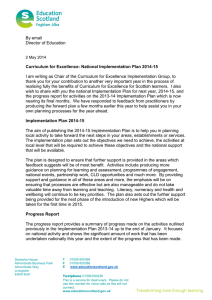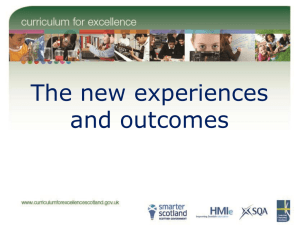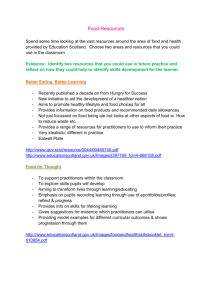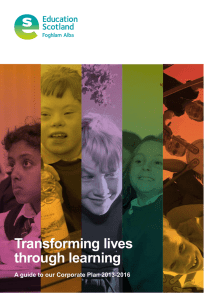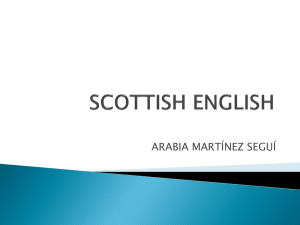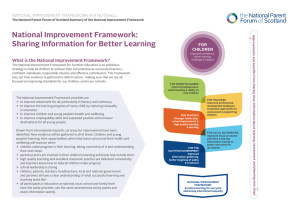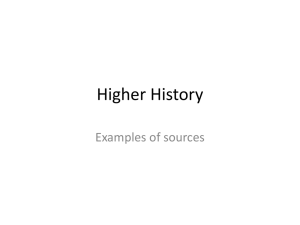HMIe: Moving Forward
advertisement
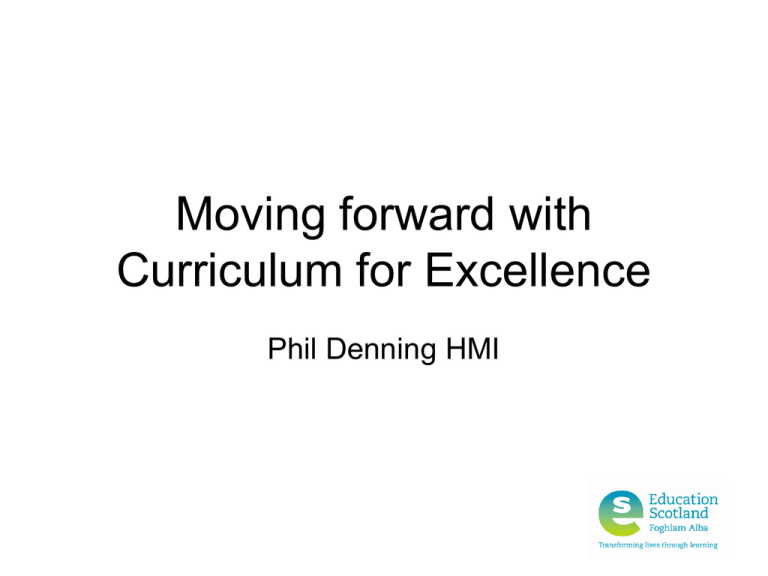
Moving forward with Curriculum for Excellence Phil Denning HMI Education Scotland • Education Scotland is the Scottish Government’s national development and improvement agency for education. It is charged with providing support and challenge to the education system, from the early years to adult learning, in furtherance of the government’s policy objectives. • It came into existence on 1 July 2011 as an Executive Agency of the Scottish Government. It was created by bringing together the resources and the functions of Learning and Teaching Scotland, Her Majesty’s Inspectorate of Education (HMIE), the National CPD Team and the Scottish Government’s Positive Behaviour Team. Our Core remit and Purpose Education Scotland is a key national body supporting quality and improvement in Scottish Education by: •leading and supporting the implementation of Curriculum for Excellence •increasing the capacity for self-evaluation and self-improvement amongst education providers and practitioners •promoting high quality professional learning and leadership •identifying and stimulating innovation, sharing successful approaches widely with others •providing independent external evaluations of the quality of educational provision at individual provider, local authority and partners, and national levels •supporting the development and implementation of policy at National Level Learning community and schools inspections update • Effective implementation of Curriculum for Excellence • Effective planning for learning ………over this next year, our most significant challenge is to demonstrate that curriculum for excellence is raising standards for all by focussing on enhancing teachers' and practitioners' understanding of the curriculum, and their confidence and skills to improve outcomes for all learners at all stages with a particular emphasis on assessment, reporting and profiling. Understanding, applying and sharing standards will be central to effective learning, teaching and assessment “Meeting the ambitions for this curriculum involves pre-school centres and schools working in learning partnerships with colleges, universities, employers, partner agencies, youth work and the voluntary sector to provide a coherent package of learning and support based around the individual learner and in the context of local needs and circumstances”. “All establishments will work with a range of partners to address the needs of all children and young people and provide motivating and challenging opportunities, particularly for those who may require more choices, more chances. Action to address the needs of learners requires an integrated approach across children’s and young people’s services with strong links to community learning and development and community regeneration” Building the Curriculum 3 (Scottish Government, 2008) What is expected – from August 2011 inspections Staff are working with increasing confidence with the experiences and outcomes (Es and Os) and know how to use these in taking a coherent approach to learning, teaching and assessment. What is expected Our expectation is that staff in centres, schools and learning communities: • have developed a clear vision and rationale for the curriculum taking account of the six learners’ entitlements; • have been supported by leaders to have developed and shared a strategy for ensuring that the development of literacy and numeracy is a corporate responsibility; Entitlements: • A coherent curriculum from 3 to 18 • A broad general education from age 3 to the end of S3 (3-15) • A senior phase: opportunities for qualifications and other planned opportunities to develop the four capacities (16-18) • Opportunities to develop skills for learning, skills for life and skills for work • Opportunities to achieve to the highest levels through personal support and challenge • Opportunities and support to move into positive and sustained destinations beyond school (18+ - and links to lifelong learning) What is expected That practitioners: • Have developed a clear vision and rationale for the curriculum taking account of learners’ entitlements; • Have been supported by leaders to have developed and shared a strategy for ensuring that the development of literacy and numeracy is a corporate responsibility; • Have developed or are actively developing a holistic approach towards health and wellbeing through the culture of the organisation; and should be familiar with the seven design principles and can talk about how their work contributes to the four contexts for learning and each young person’s broad general education. What is expected? That staff in centres, schools and learning communities: • can talk about their role in curriculum innovation and to be engaging regularly in dialogue with other colleagues (for example through professional learning communities, cluster activities, part of planned collegiate meetings or similar); and • are working with partners to ensure the curriculum provides a coherent experience for learners. Resources • • • • • Youth Scotland are developing resources to support CLD Education Scotland examples – Dundee Masterclass and also ongoing support visits Encouraging you to share and develop materials/approaches examples include: Angus Council – using GLOW Shetland Council – using Youtube www.educationscotland.gov.uk


